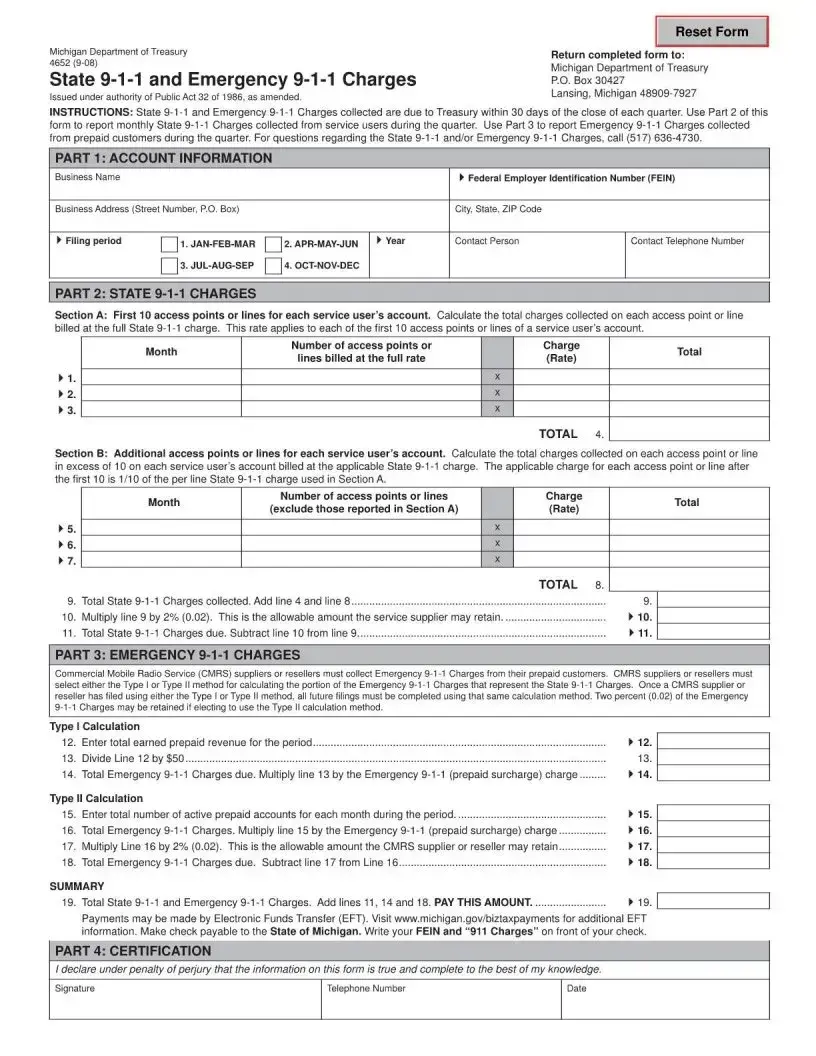When filling out the Michigan 4652 form, one common mistake is not verifying the accuracy of personal information. Individuals often overlook the importance of double-checking their name, address, and social security number. This oversight can lead to processing delays or issues with form acceptance.
Another issue is leaving sections blank that should be completed. Many times, people skip over questions they may not immediately know the answer to, intending to return to them later, but then forget. Every question that applies to the filer's situation should be answered to ensure the form is processed correctly.
A third mistake involves misunderstanding the instructions for specific questions. Not thoroughly reading or misinterpreting the guidelines can lead to incorrect responses, which might impact the individual's situation negatively. It's crucial to read each instruction carefully and seek clarification if necessary.
Individuals also frequently use incorrect dates or formats when providing information. Date format errors, such as writing the month before the day when the form specifies the opposite, can cause confusion and potential delays in processing the form.
Not signing the form before submission is another common error. A signature is often required to verify the information provided; therefore, an unsigned form may be considered incomplete and could be returned or not processed.
Submitting outdated versions of the form is also a mistake people make. Forms like Michigan 4652 are periodically updated. Using an old version might result in the rejection of the form since it may lack current and necessary information fields.
Another error is not keeping a copy of the form for personal records. Individuals often submit the only copy they have, leaving them without necessary documentation if there are queries or issues with their submission. Always keep a copy for personal records.
Last but not least, failing to consult with a professional when unsure about how to properly fill out the form can lead to mistakes. Whether it's misunderstanding complex sections or missing crucial details, professional advice can help avoid errors that could result in significant setbacks.
